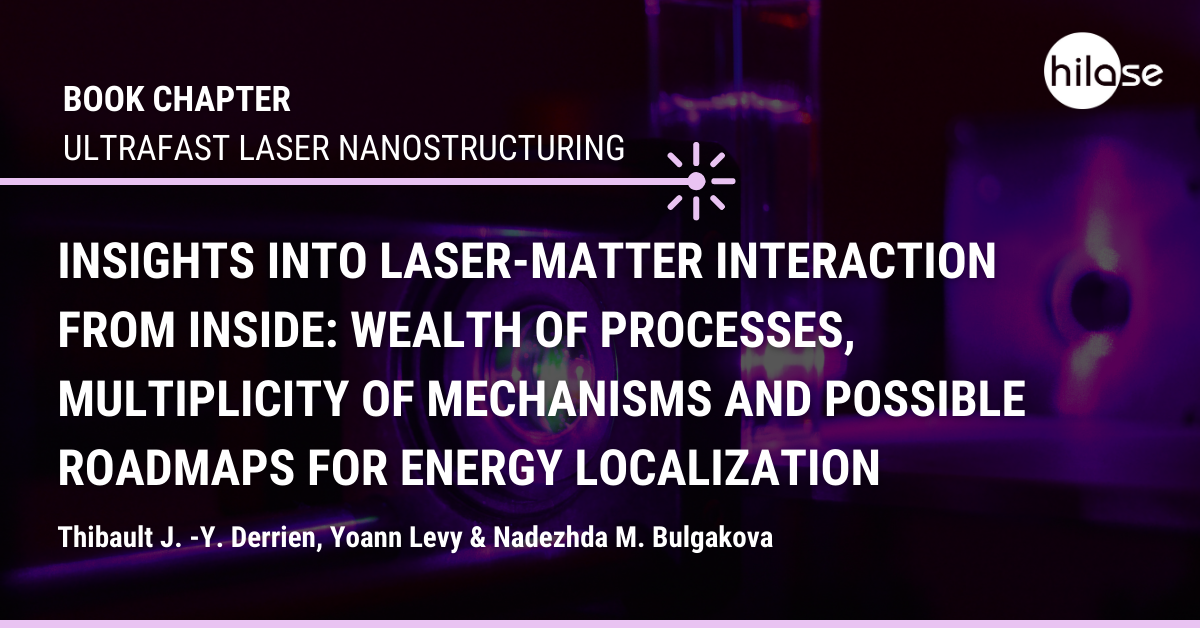HiLASIANS Thibault J. -Y. Derrien (team leader of Ultrafast Photonics), Yoann Levy (team leader of Laser Material Processing and deputy head of Scientific Laser Applications), and Nadezhda M. Bulgakova (head of Scientific Laser Applications) are the authors of the introductory chapter of Ultrafast Laser Nanostructuring.

The chapter, titled Insights into Laser-Matter Interaction from Inside: Wealth of Processes, Multiplicity of Mechanisms and Possible Roadmaps for Energy Localization, provides a review of the main fundamental linear and nonlinear processes excited by ultrafast lasers in different kinds of materials. It aims to reveal and highlight possible mechanisms, which would enable extreme localization of energy absorption.
Ultrafast Laser Nanostructuring, edited by Razvan Stoian (Université Jean Monnet, France) and Jörn Bonse (Bundesanstalt für Materialforschung und -prüfung, Germany), is the 239th volume of the Springer Series in Optical Sciences.
ABSTRACT:
Short and ultrashort laser pulses are nowadays an integral part of up-to-date technological solutions in many areas from material micro-/nanoprocessing and synthesis of new materials to quantum computing and biomedicine. The number of laser applications in science and industries is growing precipitously with tendencies of enhancing laser processing precision and reproducibility toward creation of extremely tiny objects. Coupling more laser energy into a smaller material volume in a controllable way is one of the grand challenges, which can only be achieved through a deep understanding of a wealth of the laser-triggered transient processes at different spatiotemporal scales.
The objective of this chapter is to provide a review of the main fundamental linear and nonlinear processes excited by ultrafast lasers in different kinds of materials with the aim to reveal and highlight possible mechanisms, which would enable extreme localization of energy absorption. After summarizing existing knowledge on laser-induced phenomena that includes mechanisms of laser light absorption, heat transfer peculiarities, energy thermalization at ultrafast time scales, and related hydrodynamic phenomena, an overview is given on novel insights into highly nonequilibrium processes gained in recent years via quantum and molecular dynamics simulations. The fundamental part is followed by an analysis of possible techniques and processes, which could enable extreme localization of laser energy absorption both on the surface of material samples and in the bulk. Finally, as an example of laser energy localization alternating at nanoscale, laser-induced periodic surface structures (LIPSS) are discussed. The multiplicity of the mechanisms is demonstrated via a rigorous theoretical analysis and simulations.








